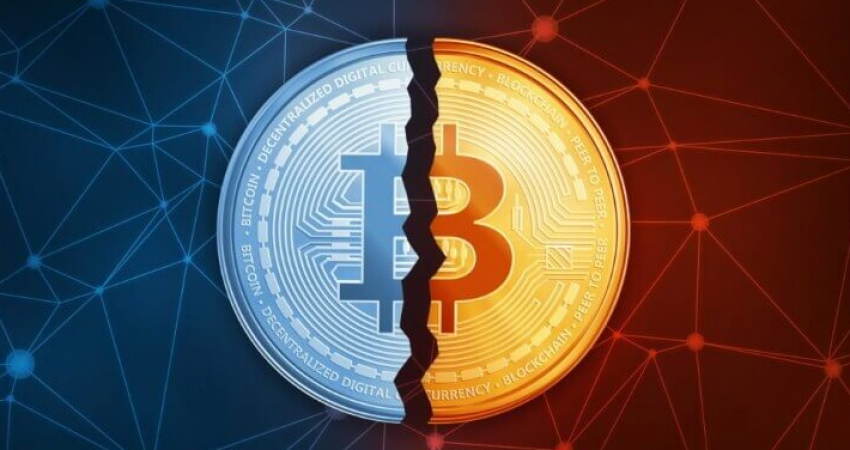Bitcoin halving is a significant event in the world of cryptocurrencies that has far-reaching implications for the market, miners, and investors alike. This comprehensive guide will delve into the concept of Bitcoin halving, its history, the effects it has on the market, and what to expect from future halving events.
What is Bitcoin Halving?
Bitcoin halving is an event that occurs approximately every four years, or after every 210,000 blocks are mined. During this event, the reward for mining new Bitcoin blocks is reduced by 50%. This mechanism is built into the Bitcoin protocol, ensuring a predictable decrease in the rate of new Bitcoins entering circulation.
The primary goal of Bitcoin halving is to control inflation and maintain scarcity, which are crucial factors in determining the value of the cryptocurrency. Bitcoin has a finite supply, with only 21 million coins ever to be mined. Halving events ensure that the release of new Bitcoins into the market slows down over time, thus maintaining scarcity and potentially increasing the value of the currency.
The History of Bitcoin Halvings
Since the creation of Bitcoin in 2009, there have been three halving events:
First Halving: November 28, 2012
The first Bitcoin halving occurred on November 28, 2012. At this point, the mining reward was reduced from 50 BTC to 25 BTC per block. In the months leading up to the halving, the price of Bitcoin saw a steady increase, rising from around $5 in October 2011 to over $13 by November 2012. The year following the first halving saw a dramatic increase in the value of Bitcoin, with the price reaching an all-time high of over $1,000 in November 2013.
Second Halving: July 9, 2016
The second Bitcoin halving took place on July 9, 2016. The mining reward was further reduced from 25 BTC to 12.5 BTC per block. Leading up to the second halving, the price of Bitcoin saw another steady increase, rising from around $200 in August 2015 to over $650 by July 2016. The following year, the cryptocurrency market experienced a massive bull run, with the price of Bitcoin skyrocketing to nearly $20,000 in December 2017.
Third Halving: May 11, 2020
The third and most recent Bitcoin halving occurred on May 11, 2020. The mining reward was halved once again, this time to 6.25 BTC per block. In the months leading up to the event, the price of Bitcoin increased from around $7,000 in January 2020 to over $9,000 by May 2020. The following year saw another significant bull run in the cryptocurrency market, with Bitcoin reaching an all-time high of over $64,000 in April 2021.
The Impact of Bitcoin Halving on Miners
Bitcoin halving has a direct impact on miners, as it reduces the reward they receive for their efforts in verifying transactions and securing the network. This reduction in rewards can lead to increased mining costs, as miners must expend more resources to mine the same amount of Bitcoin. Consequently, some miners may be forced to shut down their operations or invest in more efficient mining equipment to stay profitable.
In the short term, Bitcoin halving can lead to a decrease in the overall hash rate, as less efficient miners exit the market. However, this decrease is typically temporary, as new miners with more efficient hardware enter the market, attracted by the potential for higher profits due to the increased scarcity of Bitcoin.
In the long term, Bitcoin halving can lead to a more efficient and secure mining ecosystem, as miners are incentivized to invest in the latest mining technology to maintain profitability.
The Effects of Bitcoin Halving on the Cryptocurrency Market
Bitcoin halving has a significant impact on the overall cryptocurrency market. Here are some of the key effects:
Inflation Control
As mentioned earlier, one of the primary goals of Bitcoin halving is to control inflation by reducing the rate at which new Bitcoins enter circulation. This slowing down of supply growth helps to maintain scarcity and can potentially lead to increased demand and higher prices over time.
Market Speculation
Leading up to a Bitcoin halving event, there is often increased market speculation, with investors and traders attempting to predict the impact of the halving on the market. This speculation can lead to increased trading activity and price volatility in the months leading up to the halving.
Historical Price Trends
In the past, Bitcoin halving events have been followed by significant bull runs in the cryptocurrency market. While it is important to note that past performance is not a guarantee of future results, many investors view halving events as potential catalysts for market growth.
The Future of Bitcoin Halving: What to Expect
The next Bitcoin halving is expected to occur around 2024, with the mining reward set to be reduced from 6.25 BTC to 3.125 BTC per block. As with previous halving events, the market will likely experience increased speculation and volatility leading up to the event.
In the long term, Bitcoin halving events will continue to reduce the supply of new Bitcoins entering circulation, maintaining scarcity and potentially driving up the value of the cryptocurrency. However, as the mining rewards decrease, transaction fees will likely become a more significant source of income for miners, ensuring that they continue to maintain the security and stability of the Bitcoin network.
It is also worth noting that, as the supply of Bitcoin approaches its maximum of 21 million coins, the impact of halving events on the overall market will likely diminish. In the meantime, investors and traders will closely monitor the effects of future halving events on the market, as they have historically been associated with significant price movements.
Conclusion
Bitcoin halving is an essential aspect of the cryptocurrency’s protocol, designed to control inflation and maintain scarcity. While the impact of halving events on the market can be challenging to predict, they have historically been associated with significant price increases and bull runs.
As the cryptocurrency market continues to mature and evolve, the effects of future Bitcoin halving events may change. Nonetheless, understanding the concept of Bitcoin halving and its implications for the market, miners, and investors is crucial for anyone involved in the cryptocurrency space.
Georgia Briggs
Georgia Briggs is a cryptocurrency market expert. She has been involved in the cryptocurrency market since its inception, and has a wealth of knowledge and experience when it comes to this exciting new industry. Georgia is passionate about helping others learn about and invest in cryptocurrencies, and she is dedicated to educating people on the potential benefits of this innovative technology.




